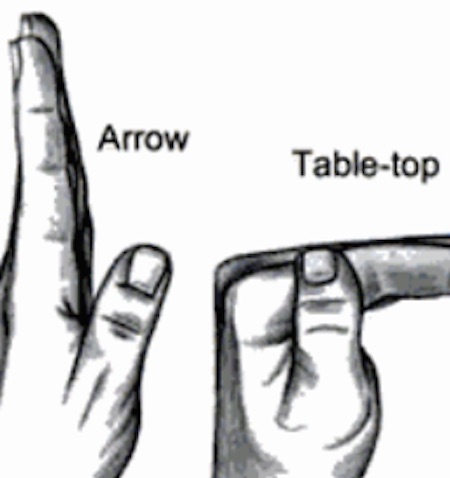Warts on the Hand and Fingers
Warts are simply areas of skin that grow faster than normal due to the presence of the wart virus. Warts are skin-colored and feel rough to the touch. The technical name is verruca vulgaris. They are most common on the hands, feet and face but they can grow almost anywhere in the body. They are infectious and some people, especially children, are more susceptible than others. What causes warts is a virus known as human papilloma virus (HPV). There are more than 60 types of the HPV virus. There is no cure for the HPV virus. Most people will naturally fight off the virus from their body within 2-3 years of infection. However, they can be re-infected at any time.
Warts on hands can be uncomfortable and embarrassing to have, but are not cancerous. They can be very itchy, and can bleed if irritated. If irritated the skin around them can become uncomfortable. Sometimes other conditions in the joint near a wart also can cause discomfort and often there is confusion as to what the source of discomfort is. In other words is it the wart that is painful or perhaps an arthritic joint below? Despite some discomfort at times, warts on the hands do not get in the way of performing activities or work and typically they are not painful.
Since warts are so common there are many different treatment options.
The first treatment many try on wart is removal with a salicylic acid liquid or pad. Using this method may take up to 12 weeks to get rid of warts. One will need a bottle of wart medication like Occlusal-HP or Compound W, a roll of 1-inch surgical tape ('Micropore' or 'Blenderm' are good) and a pumice stone or emery board. The wart should be soaked in warm water for 10 or 15 minutes. After soaking, rub away at the white, dead warty skin with the pumice stone. Apply the wart medication to the warts, getting as little as possible onto the surrounding skin and let dry. Put a piece of tape over the wart big enough to stop the medication getting rubbed off. You can also purchase bandages that have the medicine in them.
One needs to keep going down until just below the level of the surrounding skin to eradicate a wart completely. Stop when the base of the wart looks exactly like normal skin (i.e. no black dots or 'graininess). If they become sore or bleed a little just leave off the treatment and carry on the following night. Special precautions are not needed if one goes swimming to avoid infecting other people. The risk to others is very little.

Warts around the fingers and nails are typically more of a challenge. If using an over the counter medication has not worked for finger and toe warts there is a very good, but unusual treatment using 'duct tape'. Apply the tape over the warts for 6 1/2 days per week and give the finger 1/2 day off per week. In kids, the tape often has to be replaced every day, or every other day,The tape needs to be 'occlusive'; it cannot be tape that 'breathes' like in cloth Band-Aids, etc After the 6 days,.soak hand in warm water, debride wart with emery board or pumice stone, leave tape off for roughly 12 hours, and then reapply tape. Repeat cycle for up to 2 months. Traditional silver duct tape appears superior to transparent tape. There is often a foul odor when the tape is removed.
The mechanism of action of occlusion therapy with duct tape is not understood, but this benign intervention has received support from mainstream providers, and one study reported outcomes superior to those of cryotherapy.The tape probably works for two reasons. Warts are viruses, and thus susceptible to changes in temperature and decreased oxygen locally. The occlusive tape probably locally increases temperature.
As warts are caused by a virus infection, the body will build up resistance over a period of time and eventually the body will cause the warts to disappear. This may take months or sometimes years but is the natural way the body deals with warts. If they are allowed to disappear in this way it is less likely that a person will get any further ones as one will then be immune to that virus.
A hand surgeon or another physician may first try to treat a resistant wart without surgery.
Injection with lidocaine followed by multiple needle punctures is another technique which can work in resistant cases, but again is reserved for those warts that have failed other treatment modalities.
Other conditions that may resemble warts on the hands are seborrheic keratoses, molluscum contagiosum and skin cancer.
Surgery is rarely used for warts. Dermatologists can cauterize or burn off a wart or use cryosurgery in their office. Hand surgeons generally do not remove warts unless a dermatologist has tried and it recurs frequently or if the dermatologist feel that the skin area that the wart is on needs a hand surgeons attention. Lastly sometimes a dermatologist or another physician wants a wart removed surgically from the hand because they want a more definitive tissue diagnosis and/or are looking to rule out a type of benign or malignant skin cancer.
Perhaps the most important thing to remember when treating a wart is patience.
Tried and true treatments generally wrok but take time. More advanced and surgical treatments are offered only in special circumstances.






 copy.jpg)
